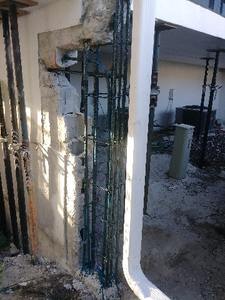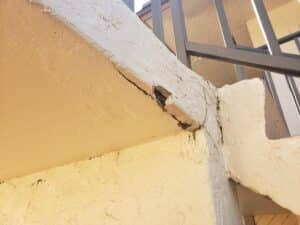In the world of building maintenance and aesthetics, EIFS foam trim plays a crucial role in enhancing the exterior appeal and structural integrity of properties. As specialists in the field of commercial and residential repairs, we have seen firsthand how properly installed and maintained EIFS foam trim can transform a property. It not only adds to the visual charm but also contributes to thermal insulation, making it a valuable component in any construction project.
However, the outdoor elements can be harsh, and over time, even the sturdiest EIFS foam trim may show signs of deterioration. This is where our expertise comes into play. We understand the importance of maintaining the condition of your EIFS installations to ensure they continue to perform their function effectively.
In this guide, we will dive deep into the essentials of EIFS foam trim, focusing on the best practices for its repair and upkeep, helping you navigate through the process with ease and confidence.
Understanding EIFS Foam Trim and Its Importance
EIFS foam trim, more formally known as Exterior Insulation and Finish Systems, plays a pivotal role in modern building exteriors. This component is crucial not only for its aesthetic appeal, which complements the architectural style of a building, but also for its functional benefits. EIFS foam trim provides substantial insulation, contributes to energy efficiency, and helps in moisture management. These factors make it an essential element in both new constructions and renovations.
However, the importance of EIFS foam trim extends beyond its immediate functional and aesthetic benefits. It also contributes significantly to the structural integrity of a building. Properly installed and maintained EIFS foam trim can prevent significant issues such as thermal bridging and water infiltration, which can lead to more severe structural problems. By understanding the critical role this material plays, property owners can appreciate why diligent maintenance and timely repairs are necessary to safeguard their investment and ensure the longevity of their buildings.
Assessing Damage: When Does EIFS Foam Trim Need Repairs?
Regular inspections are key to maintaining the integrity of EIFS foam trim, but it’s equally important to know what specific signs indicate the need for repairs. Recognizing these signs early can prevent minor issues from escalating into major damage, necessitating more extensive and costly repairs. Here are some indicators that EIFS foam trim needs professional attention:
– Cracks or splits: Even small cracks can allow water to penetrate behind the trim, causing hidden damage and potential mold growth.
– Discoloration: Changes in color can be a sign of water damage or UV degradation, both of which can weaken the foam trim over time.
– Detachment from the underlying surface: If the foam trim starts to pull away from the exterior wall, it’s a clear sign that the adhesive properties are failing, and immediate repair is necessary to prevent further exposure and damage.
We advise property owners not to overlook even the smallest signs of wear and tear. Regular checks allow us to catch potential issues early, making repairs more manageable and less intrusive. By knowing these signs and responding promptly, you can maintain the structural and aesthetic quality of your EIFS foam trim, ensuring it continues to perform its crucial role in protecting and enhancing your property.
Tools and Materials Needed for Effective EIFS Foam Trim Repair
When it comes to repairing EIFS foam trim, having the right tools and materials is essential for ensuring the work is done correctly and lasts for years. First and foremost, we emphasize the importance of quality sealants and adhesives designed specifically for EIFS systems. These products ensure a strong bond and are formulated to withstand the elements, preventing future damage. You’ll also need a high-caliber EIFS mesh to reinforce the area, providing extra durability and resistance to cracking.
Other essential tools include a notched trowel for applying adhesive evenly, a utility knife for precise cuts, and a standard caulk gun for sealant application. We recommend a mixing paddle and bucket for preparing adhesives and a sanding block or electronic sander to smooth the repaired area before finishing. Quality matters, both in materials and tools, to achieve a repair that not only fixes the damage but also blends seamlessly with the existing trim.
Step-by-Step Procedure for Repairing EIFS Foam Trim
Repairing EIFS foam trim involves a few critical steps to ensure the integrity and aesthetics of the repair. Here’s a simplified guide we follow to achieve professional results:
1. Surface Preparation: Clean the damaged area thoroughly, removing any loose material, debris, or contaminants that could prevent adhesion. If there is old sealant or adhesive, scrape it off and sand the area lightly.
2. Apply Adhesive: Using the notched trowel, spread a layer of EIFS adhesive over the area. Ensure the application is even and extends slightly beyond the edges of the repair site.
3. Place the Mesh and Additional Layers: Cut a piece of EIFS mesh to fit, and press it into the wet adhesive. Once the first layer is set, apply a second layer of adhesive over the mesh to fully encase it.
Final Thoughts
Maintaining and repairing EIFS foam trim is crucial for the protection and longevity of your building’s exterior. By understanding the importance of EIFS, recognizing damage, and using the proper tools and techniques for repairs, you can ensure that your property remains beautiful and structurally sound. Regular maintenance not only extends the life of your EIFS installations but also enhances the overall value of your property.
If you’re facing challenges with your EIFS foam trim or require professional expertise in handling your property’s exterior needs, reach out to us at McLeod’s Contracting Solutions. Our team of certified EIFS repair contractors is ready to provide top-notch service and guidance, ensuring your building’s facade is not only stunning but also enduring. Contact McLeod’s Contracting Solutions today for all your EIFS repair needs and more!







